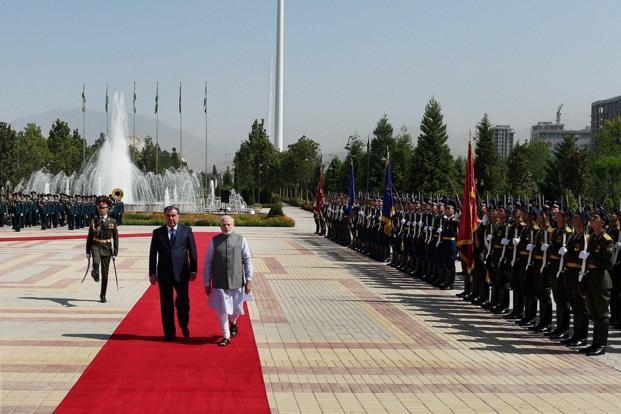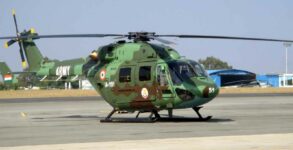Last week Tajikistan witnessed a flurry of Indian leaders’ visit. Soon after President Ram Nath Kovind’s standalone three-day visit to the Central Asian country from October 7 to 9, the landlocked nation with its border touching Pakistan occupied Kashmir (PoK) hosted External Affairs Minister Sushma Swaraj on its soil on October 11. Although she was in Dushanbe for the two-day SCO ministerial meet, she also held a bilateral discussion with her Tajik counterpart on the sidelines of the meet. No one knows what transpired bilaterally during these two visits, but perception matters.
It should be remembered that only two-day after Russian President Vladimir Putin’s October 4-5 visit to India, President had undertaken his official trip to Tajikistan, a Central Asian country which was once a part of the Soviet Union.
After all what was so compelling reason that the President, who like Prime Minister Narendra Modi, usually avoids standalone trip to a foreign country, undertook visit to Tajikistan? Though the Ministry of External Affairs, in consonance with its convoluted style of detailing, said the visit would lead to “further strengthening of Indo-Tajik bilateral relations,” it refused to speak about any specific reason behind President Kovind’s first ever Central Asian country visit. But devil is in the detail.
Those familiar with the development say the visit was undertaken keeping in mind India’s requirement for a military asset in Tajikistan which is geographically closer to the Indian sub-continent than rest of other Central Asian countries like Uzbekistan, Kazakhstan, Kyrgyzstan and Turkmenistan. In fact, India has set its eyes on Tajikistan’s Ayani airbase, a former Soviet airbase that was rebuilt by India in 2007. India wants that Dushanbe should formally lease out the airbase to Indian Air Force. It has high strategic value during the two-front war. But Russia which wields considerable political influence on the former Soviet state, has opposed India on its plan to get the Tajik airbase on lease. China and Pakistan are two other countries which are putting blockade in the way of India’s attempt to get the airbase.
In May, at the Sochi informal summit, it is learnt that Prime Minister Modi had discussed the issue with Russian President Putin. It was further pushed during Putin’s visit for the annual summit with India. India which is engaged in training and equipping Tajik defence personnel with non-lethal weapons, including Mi-8 helicopters, has already a military hospital and over a dozen military training officials at Farhor airbase, another strategic asset of the Central Asian country. During a meeting of the Joint India-Tajikistan Working Group on Defence cooperation in Dushanbe on July 26, 2018, both countries had agreed for long term bilateral cooperation between armed forces of the two countries in order to counter contemporary challenges and threats.
India is concerned about the growth of the Wahhabi ideology and the radicalization of youth in the Central Asian region. Growing footprint of ISIS in Afghanistan is said to have further contributed to the growth of radicalization in the region. Since Tajikistan is very close to Pakistan-occupied Kashmir (PoK), Indian authorities fear that ISIS may inch its way to Kashmir through Tajikistan. Russia is also worried about ISIS presence in Afghanistan and the Central Asian region. India’s argument is that without concerted fight against the menace of ISIS and the Taliban, there can’t be peace and stability in the region. It is in the condition, experts feel, Ayani airbase is pre-requisite for India as upon getting it, New Delhi will get sufficient leverage to take on ISIS and other terrorist groups in the region.
President Kovind’s visit, it is said, furthered the process of strategic cooperation with Tajikistan where India is working on other area of high importance—connectivity. It wants to connect Tajikistan with Iran’s Chabahar port via Afghanistan. That means existing Chabahar-Kabul-Kunduz- Badakhshan route will be linked to a highway that India has planned to build for Tajikistan. Significantly, it was during Minister of Road Transport and Highways Nitin Gadkari’s visit to Dushanbe this year in June, India had offered to build quality infrastructure, including highways and dry ports in the Central Asian country. This speaks volume of the country’s keenness to take a move in the direction of strategy and connectivity in the region and for this, Tajik President Emonali Rahmon must be thanked.
Disclaimer: The opinions expressed in this article are the personal opinions of the author. The facts and opinions appearing in the article do not reflect the views of NEWSD and NEWSD does not assume any responsibility or liability for the same.


















